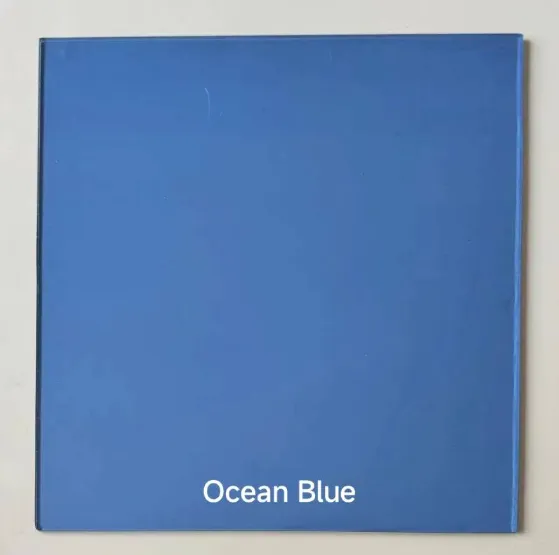

Reflective glass is an innovative material widely used in architecture and interior design. Whether it's for creating aesthetic appeal, improving energy efficiency, or adding privacy, reflective glass offers a host of benefits. This article explores the various types of reflective glass, including glass reflective, reflective green glass, blue reflective glass, and light reflecting glass.

Reflective glass is a type of glass that has been coated with a thin metallic layer to create a mirror-like finish on its surface. This material is widely used in both commercial and residential applications, providing a stylish and modern look.
The reflective nature of reflective glass helps in reflecting light and heat, which makes it a popular choice for windows, façades, and skylights. It’s especially useful in reducing glare and maintaining privacy, making it an excellent option for high-rise buildings and homes in urban areas. Whether it’s used for exterior windows or decorative interiors, reflective glass enhances the overall aesthetics and functionality of a space.
Glass reflective is a term used to describe glass surfaces that have been treated to enhance their reflective properties. It can be used in a variety of applications, from windows and doors to mirrors and facades.
Unlike traditional glass, glass reflective coatings are designed to reduce solar heat gain while allowing natural light to pass through. This feature makes it particularly beneficial in energy-efficient buildings where reducing the need for artificial lighting and controlling interior temperatures are priorities. Additionally, glass reflective provides enhanced privacy without obstructing views, making it ideal for buildings in densely populated areas.
Reflective green glass is a popular variation of reflective glass that offers a unique tint while maintaining the benefits of reflective properties. This type of glass is often used in modern architectural designs, where it adds a touch of color to the building's exterior.
The green tint in reflective green glass is not only visually appealing but also functional. It can help reduce the amount of glare and heat entering a building, providing a more comfortable interior environment. Reflective green glass is often chosen for commercial buildings, office complexes, and even residential homes, where the balance between aesthetics and energy efficiency is essential. Its subtle hue creates a harmonious blend with natural surroundings, giving buildings an elegant and sophisticated appearance.
Blue reflective glass is another popular variation of reflective glass, known for its striking and modern aesthetic. The blue tint gives a sleek and stylish appearance to windows, façades, and even interior walls, making it a favored choice in contemporary architecture.
In addition to its visual appeal, blue reflective glass also provides the same energy-efficient benefits as other reflective glass options. It reduces heat gain and glare while enhancing privacy. Whether used in office buildings, hotels, or residential projects, blue reflective glass adds a touch of luxury and sophistication, creating a visually appealing environment both inside and out.
Light reflecting glass is designed to maximize natural light while minimizing energy loss. By reflecting sunlight and reducing heat transfer, this type of glass helps maintain a more stable indoor temperature, leading to energy savings in both heating and cooling.
Light reflecting glass is commonly used in buildings that prioritize energy efficiency, as it helps reduce the need for artificial lighting during the day. The reflective surface also reduces glare, improving comfort for occupants. It’s particularly beneficial in high-rise buildings and large commercial spaces where controlling natural light is crucial to creating a comfortable and energy-efficient environment.
From reflective glass to light reflecting glass, these materials are transforming the way buildings are designed, offering both aesthetic and functional benefits. Whether you choose glass reflective for privacy, reflective green glass for sustainability, blue reflective glass for style, or light reflecting glass for energy efficiency, each type of reflective glass brings something unique to the table.
By incorporating these innovative materials into your projects, you can enhance the beauty, comfort, and efficiency of your spaces, creating environments that are both stylish and sustainable.